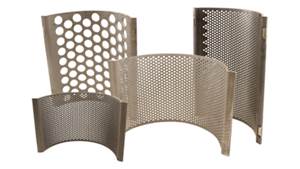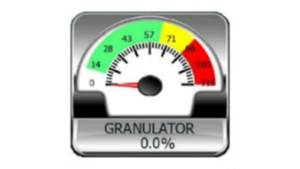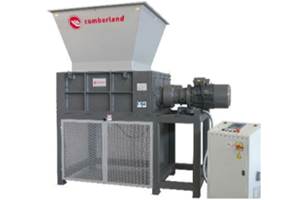Choosing a granulator depends upon the material to be cut as well as its size, shape, thickness and density. The amount of material that needs to be granulated and how the regrind will be processed are also key considerations. These factors drive decisions on the selection of the key granulator components to best serve the application.
Granulator Technology Options
Eight key components to consider when selecting a granulator that best fits your plastics size reduction operations.
Sponsored Content
Key Granulator Components
Cutting Chambers
There are three basic cutting-chamber designs: conventional offset, tangential, and straight-drop. The offset directs material at an angle perpendicular to the rotor, which is good for general purpose applications. The popular tangential design positions the rotor at an offset from the feed opening to provide a larger "bite" radius, which is the most efficient way to achieve high throughput and clean regrind with bulky, thin-walled parts. A straight-drop design feeds material from the top of the rotor and is recommended for thick-walled parts. There is also a hybrid model designed to to process both thick- and thin-walled materials in the same machine.
Rotors
Rotors hold the rotating knives that drive material into the cutting zone between the rotating and mating stationary knives mounted granulator bed. The four main types of rotors are open, closed or solid, staggered and combination staggered/segmented.Open rotors are good for granulating heat-sensitive resins or feedstocks that are still warm from processing. Closed or solid rotors provide a much stronger knife mounting arrangement to cut through the thickest feedstocks. Staggered rotors are are excellent for cutting most heavy, thick-walled parts.
Knives
The number of knife blades, their arrangement, tip angle, speed, and sharpness all have an important impact on granulate quality and granulator efficiency. Knives may be mounted on a stationary bed or on the rotor. The clearance between rotating and bed knives is crucial to size reduction performance. There is a wide variety of knife configurations from which to choose, each of which lend themselves best to certain product forms and materials.
Screens
The size of output granulate is controlled by the diameter of the holes in the screen. Screen hole size is heavily dependent on material composition and machine size. When running at slower rotor speeds, smaller screen holes and a thinner screen will produce more uniform particle sizes and highest throughput. At higher speeds, larger screen holes are needed to achieve throughput and reduce fines, although they may increase the range of particle sizes, particularly with brittle materials.
Feed Hoppers & Rools
There are a wide variety of feeding options from which to choose. Selecting the proper feed hopper depends on the the material form being processed. For example, different designs will be appropriate for profile extrusions, film or sheet, bulky parts, robotic sprue pickers, and so on. Feed rolls are used for flat materials such as extruded sheets, films, light thermoformed sheets (plastic cups, packaging materials) or flexible tubing.
Sound, Service & Safety
Apart from the fundamental components of a granulator, there are other aspects of the design that will have important ramifications on the usability of a specific model. Tearing up materials is by nature a noisy process, and the effectiveness of the sound enclosure will matter to the working environment near the granulator. Perhaps more important is how easy and safe a granulator is to service.
Controls
A standalone granulator that is used intermittently may only require manual controls. But once a granulator integrates with other equipment, such as conveyors or thermoforming equipment, a more sophisticated control is required. Increasingly controls come with "Industry 4.0" capabilities with the ability to monitor and trouble-shoot machine components or integrate with external monitoring systems.
Viewing Windows
Optional viewing windows on the hopper offer the opportunity to watch material being processed. This gives you the ability to gauge how full the cutting chamber is and verify consistent material flow without having to shut the machine down.
Read Next
Calculating ROI
Learn how to calculate granulator ROI effectively, from real world examples. Discover key insights and factors to optimize your plastic size reduction process.
Granulator FAQs
Technical questions and answers to troubleshoot your plastic size reduction process using granulators.
Shredder Options
Before purchasing a shredder for your facility, it is important to consider key components including rotors, cutters, infeed hoppers and drive types, along with the material to be cut.










